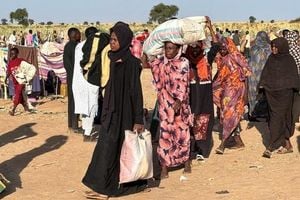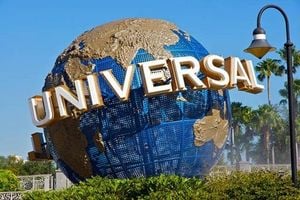For the first time since its inception more than three decades ago, the annual United Nations Climate Change Conference—COP30—will convene in the heart of the world’s largest tropical rainforest: the Amazon. Scheduled to take place in Belém, the bustling capital of Brazil’s Pará state, this landmark event aims to put the Amazon and its communities at the center of global climate negotiations. But as the world’s attention turns to the Amazon Delta, both hope and concern swirl among climate advocates, government officials, and local residents.
Brazil’s president, Luiz Inácio Lula da Silva, has made it clear that hosting COP30 in the Amazon is more than a logistical decision—it’s a bold statement. Lula wants to remind negotiators of the urgent need for ambitious climate targets, especially when it comes to protecting vital carbon sinks like the Amazon rainforest. According to ThinkLandscape, the president’s move is intended to galvanize the international community and highlight the Amazon’s critical role in the fight against climate change.
Yet, for all its symbolic power, the choice of Belém as host city has surfaced a raft of practical and ethical challenges. Sky-high accommodation prices threaten to limit attendance from delegations representing the Global South, while ongoing infrastructure projects—ironically, some of which are cutting through the rainforest itself—raise thorny questions about the summit’s long-term legacy. As these issues come to the fore, many are asking: Will civil society and local communities truly have a seat at the table, or will logistical and economic barriers stymie their participation?
Marcio Astrini, executive secretary of Observatório do Clima, a coalition of over 130 Brazilian environmental organizations, research institutes, and social movements, sees COP30 as a turning point. “COP30 comes with a lot of expectations in Brazil,” he told ThinkLandscape. The moment Belém was announced as the host city, Brazilian organizations rallied to form the Cúpula dos Povos (Peoples’ Summit)—a powerful coalition now boasting more than 1,000 groups, from social movements and NGOs to Indigenous peoples and traditional communities.
The Peoples’ Summit is gearing up for a vibrant series of side events during COP30. Plans are underway to revive the March of the Peoples, which had been suspended since 2021 due to democratic restrictions in previous host countries. Other creative actions include a boat pilgrimage and a banquetaço—a massive public community meal. “This has to happen because it will increase pressure from outside into the negotiation rooms,” Astrini explained. He stressed that civil society’s influence will be felt both inside the negotiation space, where agendas must be set well in advance, and outside, where—unlike at recent COPs—participants won’t be hemmed in by strict spatial limits.
While the lack of hotel rooms might deter official delegations, Astrini is confident that grassroots groups will find ways to show up. “People will stay in schools, churches, at friends’ homes. Social movements are used to these kinds of circumstances,” he said. However, he acknowledged the gravity of the situation for some countries: “There’s a real risk that some countries won’t be able to attend.”
Local communities are not just bystanders—they’re deeply involved in shaping the conference. The Museu Paraense Emílio Goeldi, a renowned natural history museum in Belém, will host a variety of public side events during COP30. Marlúcia Bonifácio Martins, the museum’s coordinator of research and graduate studies, described the event as “half climate conference and half World Social Forum.” She underscored the vital role of civil society in holding governments accountable: “We don’t need new agreements or new treaties – what’s needed is for existing ones to be fulfilled and for countries to demonstrate real efforts to move forward.” Martins added, “When people take to the streets and make their voices heard, that has a real impact. It’s hard for any government to remain untouched by the clamor of its population.”
Traditionally, UN climate conferences are divided into the Blue Zone (for official negotiations) and the Green Zone (for civil society and the private sector). But COP30 will introduce an unofficial third space: the Yellow Zone. Created by COP das Baixadas, a coalition of 14 organizations focused on climate justice in the Amazon’s urban peripheries, the Yellow Zone is set to become a hub for discussing climate solutions rooted in marginalized neighborhoods. Jean Ferreira, a founder of COP das Baixadas, told InfoAmazonia, “In the Amazon, we’re not going to allow [exclusion] to happen because we have a strong social movement.” The Yellow Zone, inspired by the yellow in Brazil’s flag, will host events across Belém’s peripheral areas, ensuring that the voices of the region’s most vulnerable are not drowned out.
Yet, as the city prepares for its moment in the global spotlight, concerns about the environmental cost of development are mounting. Construction projects like Avenida Liberdade are slicing through the rainforest in a bid to modernize Belém’s infrastructure. Martins voiced her fears: “You know that when a road cuts through a [rainforest], it rarely guarantees that this [rainforest] won’t turn into a real estate development, so that’s a major concern.” She criticized these projects as superficial, saying, “Some of these projects are just makeup – they’re beautifying streets but not bringing any real benefits to people.”
Brazil’s Ministry of the Environment and Climate Change is banking on the networks it is building ahead of COP30 to yield lasting results. One such initiative is the Circle of Peoples, a space uniting Indigenous peoples, Quilombolas, traditional communities, and family farmers. The ministry told ThinkLandscape, “One of the expected outcomes is a network of communities increasingly engaged in the [climate] issue, paying close attention to the implementation of mitigation and adaptation strategies, as outlined in the National Climate Plan and local adaptation plans.”
Astrini is optimistic that the summit will serve as a catalyst for greater local engagement with the climate agenda. “We’re going to have many more movements joining the climate agenda than we have today,” he predicted. “COP will be a catapult for social movements that have never been close to this debate.” He also noted that local organizations in the Amazon are now organizing “much more intensively than in the rest of the country.”
Despite the logistical hurdles, many in the region are hopeful that COP30 will finally put the Amazon on the map for world leaders. Martins summed up the mood: “The spirit of the COP is also one of accountability. Here in the Amazon, there’s a strong expectation that people will start to truly see the Amazon.”
As COP30 approaches, the world will be watching not just for new climate commitments, but for signs that the Amazon’s people—and their forests—are finally being heard.




